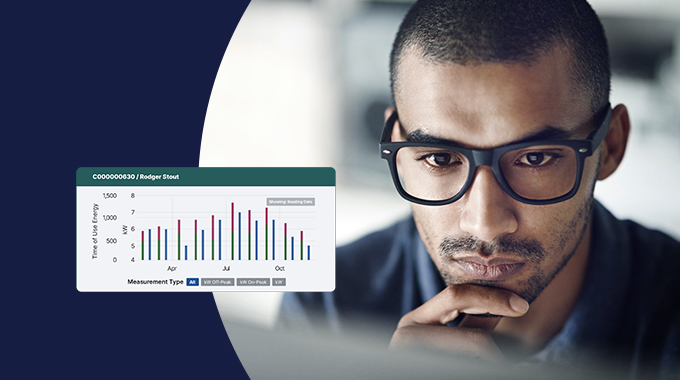When metrics come from disconnected systems, the story they tell rarely lines up. Smart meters, work order management, customer portals, finance tools, and billing platforms each generate valuable data. But when they aren’t integrated and unified, departments end up working from different versions of the truth. Which means utility teams and leadership are left reconciling mismatched reports instead of focusing on performance analytics and outcomes.
But this doesn’t have to be the case.
With an integrated and unified platform, data moves directly into billing, field service, and customer service systems. That means all departments have a single, consistent view of what’s happening. Real-time synchronization turns what used to be lagging or conflicting reports into immediate visibility.
A customer calls about unusual usage. The customer service rep has the same data as the field service crew. A technician identifies a potential issue in the field. Billing and leadership see it instantly. Information is no longer siloed; it’s available to everyone who needs it, when they need it.
Just as importantly, this data is now available for performance reporting and analytics to key stakeholders, including leadership teams, public utility officials, and city officials.
CIS as the Connector
A unified and integrated CIS (Customer Information System) serves as the central connector across technology, departments, and processes. It provides:
- Real-time synchronization ensures information updates instantly across systems, eliminating lag or duplication.
- Process-first workflows that align with how teams actually operate, ensuring technology supports daily work instead of slowing it down.
- Role-based access so everyone—from field techs to CFOs—sees the data they need in the format that helps them act quickly and confidently.
As Eric Dial, Deputy Director of Finance and Customer Service at the City of Greeley explained:
“It’s really about enabling our staff to be able to do the work they do, the day-to-day work, as efficiently and effectively as possible. Our integrated CIS allows us to communicate with our customers and across our team.”
Preparing and Anticipating Tomorrow’s Questions
The value of a connected and unified CIS goes beyond fixing today’s bottlenecks. Unified data equips utilities to anticipate tomorrow’s questions and challenges before they arise. Instead of waiting for billing disputes, staff can spot unusual usage patterns early. Service teams can see which neighborhoods experience recurring issues and address them proactively. Customers gain real-time visibility into their usage, costs, and potential savings, while regulators and boards receive accurate reports the first time they’re asked.
Alexandra Casey, Customer and Utility Services Manager at the City of Plano, shares:
“Customers want to know when they have a continuous flow issue, when they have a high consumption issue, and when they are going to approach tier number four and save some money.”
A modern CIS makes that possible, empowering both staff and customers with answers and actionable information.
Unlocking Business Visibility
By connecting technology, departments, and processes into a single CIS, utilities can focus on the metrics that matter, provide clear and trusted information to stakeholders, and deliver proactive service to customers.
It’s not just about streamlining today’s work; it’s about preparing your utility to increase performance and lead with confidence in the future.
To understand how to get to new levels of business visibility and measurement through unified data and a connected CIS,




